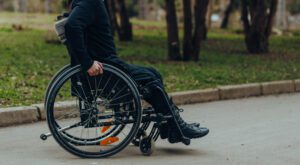
Several factors determine the level of paralysis, including:
- Where the injury occurred
- Whether the injury was complete or incomplete
When the spinal cord sustains damage, the victim often suffers total or partial paralysis below the level of the injury. For this reason, injuries in the neck are generally more severe than injuries in the lower back. Paralysis from a cervical spine injury in the neck may impair breathing while paralysis from an injury in the lumbar spine will likely only affect the lower body.
It is also true that some spinal cord injuries are complete while others are incomplete. An incomplete injury may leave open a larger possibility of recovery even if the patient initially suffers paralysis below the level of the injury.
Understanding Spinal Cord Injuries and Paralysis
Fractures of vertebrae and other spinal injuries compromise the spinal cord. Injury to this bundle of nerves impairs communication between the brain and other parts of the body below that level. This can cause paralysis as well as other impairments.
In general, the spine does a good job of protecting your spinal cord. However, damage can occur during traumatic accidents. These may include:
- Car accidents
- Motorcycle accidents
- Bicycle or pedestrian accidents
- Diving accidents
- Falls from a height
- Sports accidents
- Violent acts
- Surgical mistakes
According to the American Academy of Orthopaedic Surgeons, most fractures of the spine occur in either the thoracic spine or lumbar spine. This is the area between your top rib and your tailbone. If you suffer an injury in this area, you may struggle to control your torso from that point down and could suffer from paraplegia.
Treatment for Patients With Paralysis
A broken back with spinal cord involvement is a serious injury and requires emergency medical care. Never try to move a person with a possible spinal cord injury unless absolutely necessary. First responders can brace their neck and use special techniques and a backboard to transfer the person to the hospital. Once at the hospital, doctors will determine their level of injury and put a treatment plan in place. This may include:
Neurological Testing
The doctor and other caregivers will evaluate the patient’s injury by conducting simple tests of their neurological status. This could include testing reflexes, asking them to move limbs, and seeing if they respond to stimuli in all limbs. The doctor may also test the torso in this way.
Imaging Scans
Doctors need to know exactly what is going on inside the patient’s spine before they can put a plan in place to repair it. The only way to do this is by using medical imaging. Some common tests include:
- X-rays
- Computed tomography (CT) scans
- Magnetic resonance imaging (MRI)
Surgery or Other Stabilizing Treatment
In many cases, doctors will discover that the patient’s spine requires decompression or stabilization. One way to do this is surgery. The surgeon uses many types of tools, including metal rods and screws, to fuse broken vertebrae and protect the spinal cord from further injury.
Continued Care and Rehabilitation After a Spinal Cord Injury With Paralysis
If you are suffering from paralysis due to a spinal cord injury, your doctor will likely recommend both inpatient rehabilitation and outpatient physical therapy. You may go to an inpatient rehabilitation facility that deals specifically with spinal cord injuries or the doctor may send you to a general care rehabilitation facility. Either way, the goals for your time there will include:
- Restoring your mobility and independence
- Reducing pain and discomfort
- Helping you relearn how to do things despite your paralysis
During inpatient rehabilitation, you will have regular physical therapy sessions to rebuild muscle mass, regain strength, and relearn skills. You may also have other types of therapy, such as occupational therapy. Once released from the inpatient facility, you will likely need to continue these therapies for several months or more on an outpatient basis.
Pursuing Compensation After a Paralyzing Accident
If you suffered a spinal cord injury that resulted in paralysis, you may be able to hold the at-fault party liable for your medical bills, rehabilitation costs, diminished earning capacity, pain and suffering, and more. If someone else’s negligence left you or a loved one paralyzed, you have the right to pursue compensation.
The personal injury team from Newsome | Melton is standing by to review the facts of your case. We offer free case evaluations. For more than 20 years, our spinal cord injury lawyers have fought to protect the rights of our clients and pursued the compensation they deserve. Let us investigate your case, collect evidence to prove liability, and go after the compensation you need.
Call us today for your free consultation with a member of our team: (800) 917-5888.
